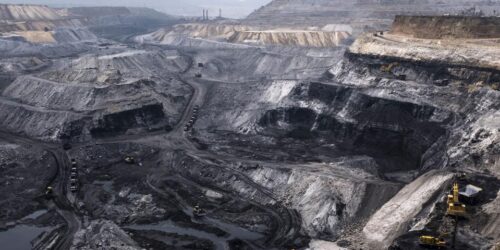According to the 2017 census, the poverty rate in southern Balochistan is 46%, the highest in the country – the lowest rate being 16.3% recorded in Punjab. Ironically, Balochistan is also the province richest in terms of natural resources.
The official website of the Balochistan government says the province “possesses a great unexplored potential of metallic and non-metallic minerals” including coal, chromite, barites, sulfur, marble, iron, quartzite and limestone.
“Balochistan’s coal can cater to the existing and future energy requirements of our country to a great extent. More than 90% of coal is dispatched to other provinces for use in brick kilns.”
The website claims that the province also has sizable deposits of chromite in Muslimbagh, Lasbela, Khuzdar, Kharan and Chaghi districts.
The biggest deposit of barytes is located near Khuzdar with a total reserve of over 2million tons. Scientific mining as well as grinding of this mineral started in 1976.
Almost the entire production of barites is consumed locally by the Oil and Gas Development Company (OGDC) and other oil drilling companies.
The Sulfur deposits are at Koh-e-Sultan in District Chaghi. The deposits are of fumaroles origin and native Sulfur is found in cracks and as impregnation in volcanic tuffs.
Chaghi district also has large commercially exploitable deposits of marble from Dalbandin to the borders of Iran. Some deposits are located close to the Pakistan-Afghan border areas – Zardkan, Siah-Chang, Jhulli, Patkok, Maskichah, Zeh, Chilgazi and Buttak.
Onyx, a dark green marble, found in Chaghi is of superior quality. Onyx of good quality is also found in Bolan, Lasbela and Khuzdar districts. Chaghi also possesses nearly 30 million tons of iron ore.
In a report, the Geological Survey of Pakistan said there are 1 to 7 meters thick ironstone beds in Dilband area of Mastung. The reserves have been tentatively estimated at over 200 million tons.
The province also has deposits of QUARTZITE, a relatively newly discovered mineral in Lasbela district while Limestone also exists in abundance in different parts of Balochistan.
Several hundred meters thick layers of limestone, at places dolomitic, occur in Quetta and Kalat. Limestone of Cretaceous age, 300 to 50 meters thick, is widely found in Balochistan. Harnai, Sor Range, and Spintangi areas have reserves of limestone.
Discovered in 1952, Sui Gas Field is a natural gas field that has energized the entire country for decades. Its current production is 300 MMSCFD, according to the Pakistan Petroleum Limited.
The Saindak Copper-Gold Mines located in Chagai District contain gold, copper and silver deposits with the current production of 7.25T per annum of copper-gold from smelting process
The Reko Diq mine also located in is one of the largest copper and gold mines in the world having estimated reserves of 5.9 billion tons of ore grading 0.41% copper and gold reserves amounting to 41.5 million oz, according to Pakistan and Gulf Economist.
“Muslimbagh and Bella deposits are the major commercial locations of chromite reservoirs with average annual production of 33,273 million metric tons (mmt). These mines account for 81% of the total chromite produced in Pakistan.
“Chromite is a source of chromium which is used in making stainless steel. It is a raw material for production of ferro-alloy high grade ores and a high demand internationally” said Professor Dr Din Mohammad Kakar, former head of the Department of Seismology, University of Balochistan.
Dr Din said ‘’Significance of copper resources is widely known because of the investment made in the development of Saindak and Reko Diq copper deposits in Chaghi district.”
“Balochistan basin consists of a significant amount of gold and copper deposits currently being mined at a large scale,” he added.
He said at Saindak Copper-Gold Mines, four main ore bodies have been evaluated and explored with 0.498% copper content and a cut-off grade of 0.3%.
“The north ore body has a total reserves of 50mmt, having 0.52% copper content with a cut-off grade of 0.35%. The south ore body, which lies 2km away from the north ore body, has 54mmt of ore with copper content of 0.488% and a cut-off grade of 0.3%.
“The third ore body has around 27mmt of ore with 0.64% copper content and a cut-off grade of 0.4 %. Significant gold and molybdenum values are associated with this ore body.
He said the east ore body is one kilometer southeast of the south ore body. It has 264 mmt reserves with 0.388% copper content and a cut-off grade of 0.3%.
But despite being so rich in terms of natural resources, Balochistan is still the most backward province.
Waseem Rakhshani, a geology scholar from University of Balochistan, said the biggest cause of unemployment in Balochistan is lack of industries as most of the minerals mined here are sent to other cities for further processing.
“The economy of the province can only develop if the federal and provincial governments work on setting up industries inside Balochistan. Such industries will lower the poverty rate and unemployment in the province and spark development,” he added.





